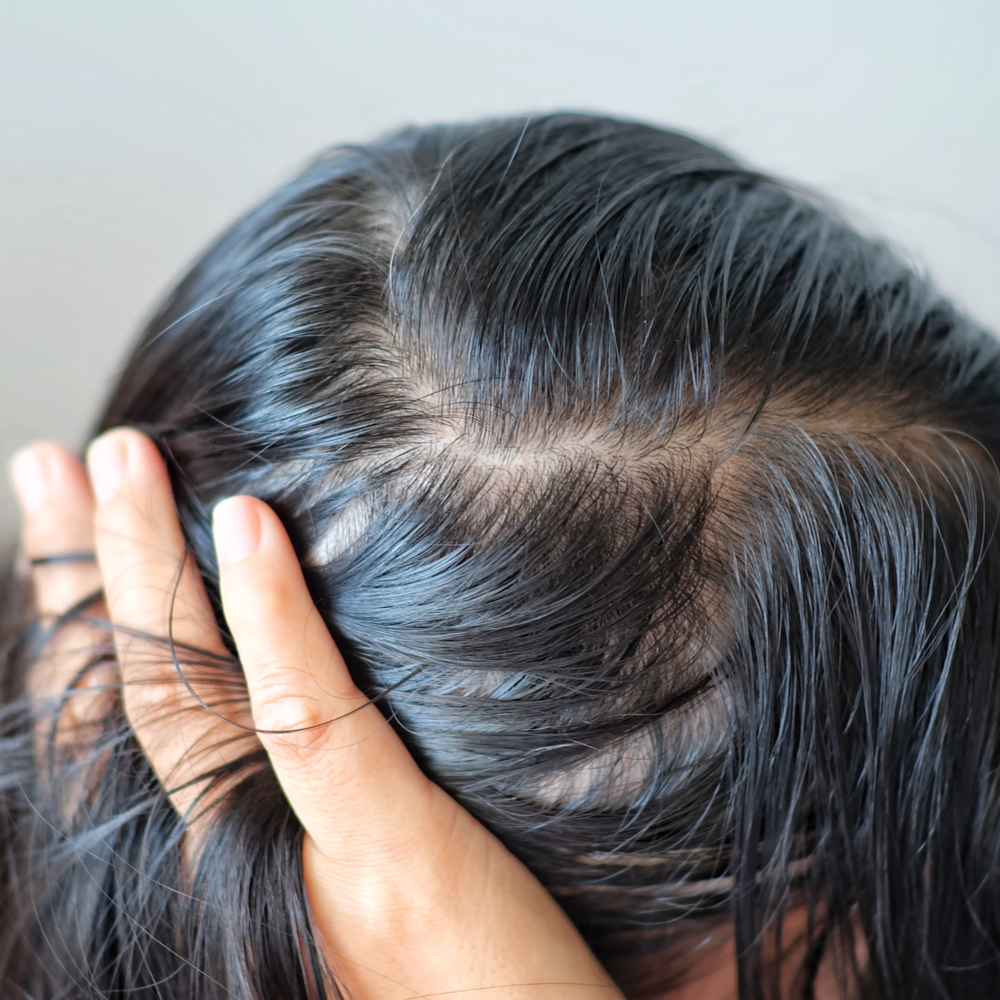Capillary Hyperhidrosis refers to excessive sweating of the scalp. This medical condition has different origins and, in general, it appears during important physical efforts, in stressful situations or when eating certain dishes. According to the natural process, 99% of sweat is water and the rest is a mixture of salts, uric acid, lactic acid and other substances. The accumulation of these elements in the scalp is counterproductive for the hair follicles, as it weakens them, takes away the shine of the hair and reduces the thickness of the strands.
Since a large amount of sweat is produced in this area, drips onto the forehead, temples and neck, affecting the health of the skin. And although its treatment can be complex, there are several options to try to control it. Let’s take a look.
What is Capillary Hyperhidrosis?
Capillary Hyperhidrosis is another name given to “cranial hyperhidrosis”, related to increased sweating in specific areas of the body, due to an increase in the secretion of sweat glands,
In the particular case of hair, sweating increases with high temperatures. Although sweating in this area is usually odorless and sterile, it is still unpleasant and uncomfortable, especially when working or having a social gathering,
In addition, hair is a defense for the scalp, especially against environmental aggressions. However, the very action of protection makes it difficult to eliminate what you sweat. Therefore, the risk of problems such as irritant dermatitis or seborrheic dermatitis is increased.
In more serious cases, this condition also involves hair loss.
Causes of Capillary Hyperhidrosis
The causes of hyperhidrosis are related to the hyperactivity of the eccrine and apocrine sweat glands. This in turn is derived from factors such as stress, emotional tension, the effects of certain medications or thermal reasons.
When these stimulants are activated, the craniofacial area becomes more sensitive and intensifies perspiration in order to graduate and neutralize the temperature increase. Furthermore, there are 2 types of hyperhidrosis.
- Primary: it is the abnormal response of the nervous system to emotional stress. It could have a genetic component.
- Secondary: it is linked to pathologies such as diabetes, obesity or hormonal alterations.
How to Fight Capillary Hyperhidrosis?
The dermatologist is the specialist to treat this type of diagnosis. However, there are certain habits that can help manage hyperhidrosis. Remember that if the symptoms do not improve, a visit to the doctor is essential.
Here’s how to better manage hyperhidrosis:
Drink Cold Water
Since sweat regulates body temperature, drinking cold water helps reduce heat. Drinking cold water helps to reduce the temperature and the signs of sweating.
On the other hand, the high thermal conductivity of water facilitates the transport of heat to the skin. Thus, it quickly cools the body, evaporates sweat and evacuates steam with the exhaled air.
Eat Healthy
Foods with a certain degree of spice are linked to profuse sweating. This is called “taste sweating”. This sensation results from the increase in body temperature caused by very hot or spicy foods.
On the other hand, fruits, vegetables, low-fat milk and fatty fish are among the foods that maintain the balance of the body so that there are no stimuli causing excessive sweating.
Take Care of Hygiene
The abundant perspiration on the head requires a daily washing of the hair. This habit is part of hygiene to eliminate bacteria. It is essential to apply a shampoo with neutral components or for sensitive hair.
When rinsing, make sure that no product remains, Also try to avoid hot water. You can alternate with treatments to strength en and moisturize the hair fiber. Anti-hair loss, conditioning and anti-dandruff masks are among the most beneficial.
Look for Ventilated Areas
Environmental temperature is very linked to scalp sweating. Ventilate rooms so that the heat doesn’t disturb your hair.
Wear Hats and Scarves
When you go out, apply sunscreen to your hair and don’t exclude hats and scarves. This is one way to prevent the effects of the sun. During summer, do your hair with a comfortable hairstyle and cover it, in order to prevent damage caused by UV rays.
There you go! You now know more about Capillary Hyperhidrosis and know how to better manage it. Did we miss any tips? Let us know in the comments below.


